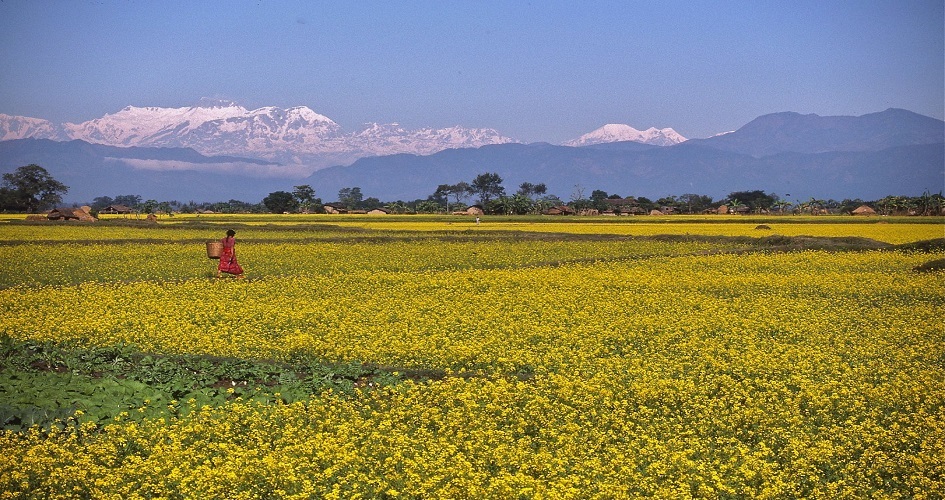Kailali District is one of the districts of the Seti Zone's Far West Development Region. It is one of the districts of the Seti Zone's Terai. This location is well-known for its natural beauty, biological variety, and cultural significance. It is 3,235 square kilometres in size.
This district is bordered on the east by Bardiya and Surkhet, on the west by Kanchanpur, on the north by Doti and Dadeldhura, and on the south by India. Although it is located in Terai, approximately 40% of the District is mountainous terrain.
History of Kailali District
This district was part of the Doti Kingdom before Gorkha King PN Shah reunified Nepal. After the Anglo-Nepalese war (1814-1816) between the then Kingdom of Nepal and the East India Company, followed by territory concessions in the Sugauli Treaty, Nepal surrendered it to the East India Company.
 After the Treaty of 1860, Nepal could reclaim this area and Kanchanpur, Banke, and Bardiya.
After the Treaty of 1860, Nepal could reclaim this area and Kanchanpur, Banke, and Bardiya.
How Can You Reach Kailali District?
From Kathmandu, we may take a plane to Kailali. The Far West Development Region's entry gate is located in Kailali District. The distance between Kathmandu and this location is roughly 700 kilometres. In addition, we can get to this location in one day by bus.
Tourism in Kailali
This area is ideal for touring because of its beautiful green forest, lovely rivers and parks, and cultural significance. Approximately 64% of this region is covered with green forest. The district's additional attractions include the Karnali River, Tikapur Park, Karnali Bridge, Pathariya River, the magnificent Dolphin, Purina Lake, and Ghoda Ghodi Lake. It is simple to visit this location because of the excellent transportation, hotel, and lodge facilities.
Despite its enormous potential, this region has particular challenges that are impeding tourism growth. The main reasons for this include a lack of government involvement, professionalism, and adequate tourist strategy, execution, and promotion. Furthermore, there is a lack of infrastructure and a poor application of current laws and regulations.
Tikapur - Kailali District
Tikapur is a municipality in Nepal's Kailali District, Province No. 7, formed on March 10, 2017, combining the two previous Village Development Committees of Narayanpur and Dansinhapur.
It is located along the banks of the Kauriala River. Tikapur Great Garden is the most visible landmark. Nepal had a population of 76,084 people living in 15,356 households at the time of the 2011 census.
Places to Visit in Kailali District
Karnali Bridge
This bridge is located on Mahendra Highway in the eastern portion of Kailali District, at Chisapani. This is Asia's second sample bridge, which is supported by a single pole. Kawasaki Industries built this bridge on the design of the American company Stain Main for a budget of $360 million.
 This bridge connects Nepal's extreme west with the rest of the country. All are drawn to the beautiful bridge design, calm and fresh air, and the flowing deep blue water. The delicious Karnali fish are also drawn cards for the Karnali Bridge.
This bridge connects Nepal's extreme west with the rest of the country. All are drawn to the beautiful bridge design, calm and fresh air, and the flowing deep blue water. The delicious Karnali fish are also drawn cards for the Karnali Bridge.
Tikapur Park
Tikapur Municipality owns and operates this park. This park, which covers an area of twelve bighas, is located on the banks of the Karnali River. We may go around six kilometres from Tikapur to reach this location. You can get lost in this location because of the lovely flowers and the enticing natural woodland.
Ghoda Ghodi Lake
It is located in the Kailalli District's eastern region. Darakh, Sadepani, and Ram Shikhar Jhala VDCs are all affected. It has a total surface area of 138 Hectors. This lake is shaped like a hand. Fourteen lakes surround this lake.
 We can find about 450 different species of plants, 138 different birds, 32 different types of butterflies, 300 different types of medication, and 27 different types of fish. It ranges in depth from one to four meters.
We can find about 450 different species of plants, 138 different birds, 32 different types of butterflies, 300 different types of medication, and 27 different types of fish. It ranges in depth from one to four meters.
Dolphin
Another highlight in this district is the dolphin. Dolphins may be found in the Karnali and Pathariya rivers. When the rivers' water levels are high, dolphins travel from India to this location. In the Karnali area, it is estimated that there are approximately a hundred Platanista gangetica dolphins. In these waterways, we may see dolphins playing hide and seek.















